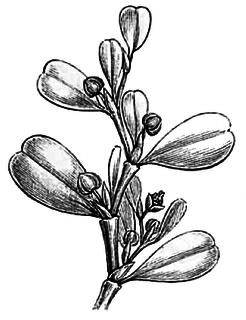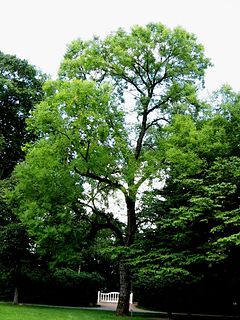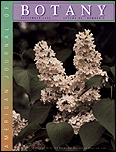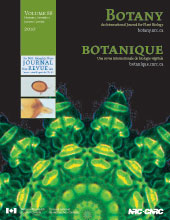
Sir William Jackson Hooker was an English systematic botanist and organiser, and botanical illustrator. He held the post of Regius Professor of Botany at Glasgow University, and was Director of the Royal Botanic Gardens, Kew. He enjoyed the friendship and support of Sir Joseph Banks for his exploring, collecting and organising work. His son, Joseph Dalton Hooker, succeeded him to the Directorship of Kew Gardens.

Maxillarieae is a large and complex tribe of orchids native to South and Central America. Within the tribe there are eight subtribes one of which is that of the genus Maxillaria.

Botany Bay, an open oceanic embayment, is located in Sydney, New South Wales, Australia, 13 km (8 mi) south of the Sydney central business district. Its source is the confluence of the Georges River at Taren Point and the Cooks River at Kyeemagh, which flows 10 km (6 mi) to the east before meeting its mouth at the Tasman Sea, midpoint between La Perouse and Kurnell.

Lactoris fernandeziana is a flowering shrub endemic to the cloud forest of Masatierra — Robinson Crusoe Island, of the Juan Fernández Islands archipelago of Chile.
The Field Elm cultivar Ulmus minor 'Amplifolia' was first described in 1932, and sourced from Hesse's Nurseries, Weener, Germany as U. alba Waldst. et Kit.

The Field Elm cultivar Ulmus minor 'Sowerbyi', commonly known as the Sowerby Elm, was described by Moss in The Cambridge British Flora (1914). The tree, once referred to as the 'Norfolk Elm' by Smith, was commonly found in the hedgerows and woods of Norfolk, Cambridgeshire, and Huntingdonshire in the early 20th century before the advent of Dutch elm disease. Melville considered it a hybrid of 'Coritana'.
The elm cultivar Ulmus 'Lombartsii' is considered "possibly Ulmus × hollandica or Ulmus carpinifolia " by Green (1964). The tree was raised by Lombarts Nurseries at Zundert, the Netherlands, circa 1910.

The hybrid cultivar Ulmus 'Androssowii' R. Kam. an elm of Uzbekistan sometimes referred to in old travel books as 'Turkestan Elm' or as 'karagach' [:black tree, = elm], its local name, is probably an artificial hybrid. According to Lozina-Lozinskaia the tree is unknown in the wild in Uzbekistan, and apparently arose from a crossing of U. densa var. bubyriana Späth, which it resembles, and the Siberian Elm Ulmus pumila.
Australian Systematic Botany is an international peer-reviewed scientific journal published by CSIRO Publishing. It is devoted to publishing original research, and sometimes review articles, on topics related to systematic botany, such as biogeography, taxonomy and evolution. The journal is broad in scope, covering all plant, algal and fungal groups, including fossils.

Capnodiales is a diverse order of Dothideomycetes, initially based on the family Capnodiaceae, also known as sooty mold fungi. Sooty molds grow as epiphytes, forming masses of black cells on plant leaves and are often associated with the honeydew secreted by insects feeding on plant sap. This diverse order has been expanded by the addition of several families formerly thought unrelated and now also includes saprobes, endophytes, plant pathogens, lichens and rock-inhabiting fungi. The new additions include the genus Mycosphaerella containing the causal agents of several economically important crop and tree diseases. A small number of these fungi are also able to parasitise humans and animals, including species able to colonise human hair shafts.
The Archives of Natural History is a peer-reviewed academic journal and the official journal of the Society for the History of Natural History. It publishes papers on the history and bibliography of natural history in its broadest sense, and in all periods and all cultures. This includes botany, geology, palaeontology and zoology, the lives of naturalists, their publications, correspondence and collections, and the institutions and societies to which they belong. Bibliographical papers concerned with the study of rare books, manuscripts and illustrative material, and analytical and enumerative bibliographies are also published.

The Vandeae is a large monophyletic tribe within the family of orchids.
Dorycnium is a formerly recognized genus in the pea family, found in the Mediterranean and the Canary Islands. It is now considered a synonym of Lotus.

Botany Hill, formerly known as Botany Quarry, is a Site of Special Scientific Interest in the Teesdale district of south-west County Durham, England. It occupies a position on both sides of How Gill, just under 1 km north of the village of Hury, in Baldersdale.
Systematic Botany is a peer-reviewed scientific journal covering the study of systematic botany. It is published quarterly by the American Society of Plant Taxonomists. According to the Journal Citation Reports, the journal has a 2010 impact factor of 1.897.

The Siberian elm cultivar Ulmus pumila 'Poort Bulten' hails from Arboretum Poort Bulten in Losser, Netherlands. This tree was for many years mistaken for Planera aquatica or 'water elm' and commercially propagated under that name.
The South African Journal of Botany is a bimonthly peer reviewed scientific journal covering all aspects of botany as related to Southern Africa. It is published by Elsevier on behalf of the South African Association of Botanists, of which it is an official journal. It was established in 1982 and, after publishing 3 volumes, absorbed the Journal of South African Botany as of 1985. The latter journal had been established in 1935 and the merged journal continued the volume numbering of the older one. According to the Journal Citation Reports, the journal has a 2013 impact factor of 1.340.

The Wych Elm cultivar Ulmus glabra 'Concavaefolia' is a curled-leaved form now rare in cultivation, and identified from old herbarium specimens labelled U. scabra Mill. [:glabra Huds.] var. concavaefolia. It was also known as the wych 'Cucullata' cultivar.
Bulletin of the Natural History Museum, formerly known as Bulletin of the British Museum is a series of scientific journals published by the British Museum, and later by the Natural History Museum of London. Titles in the series included












